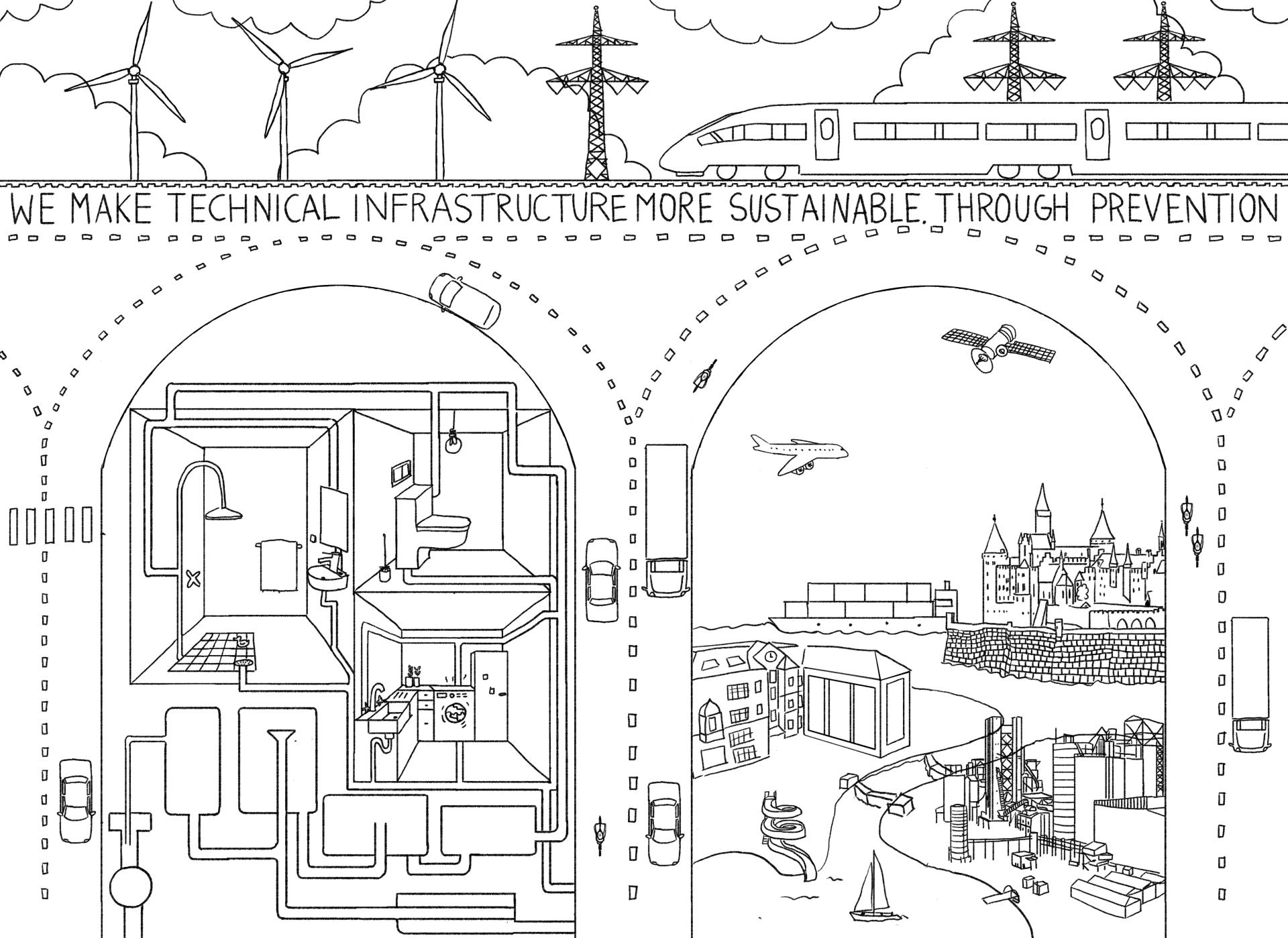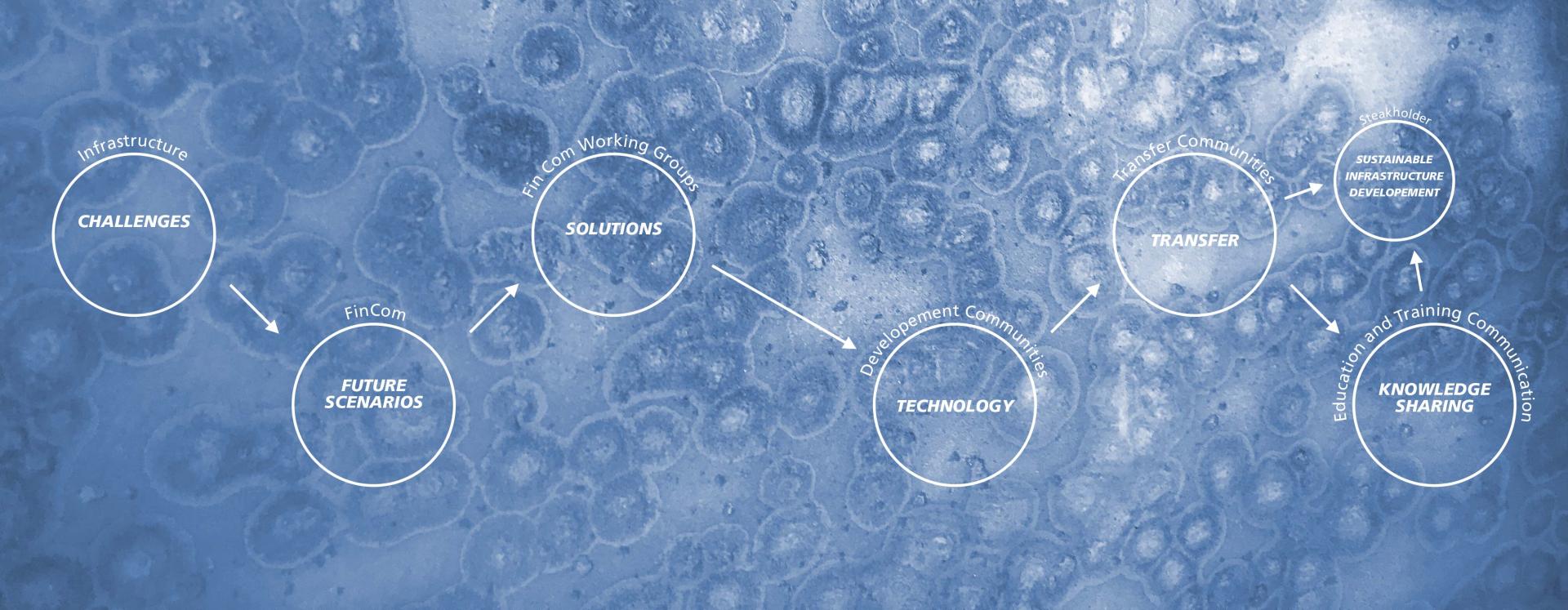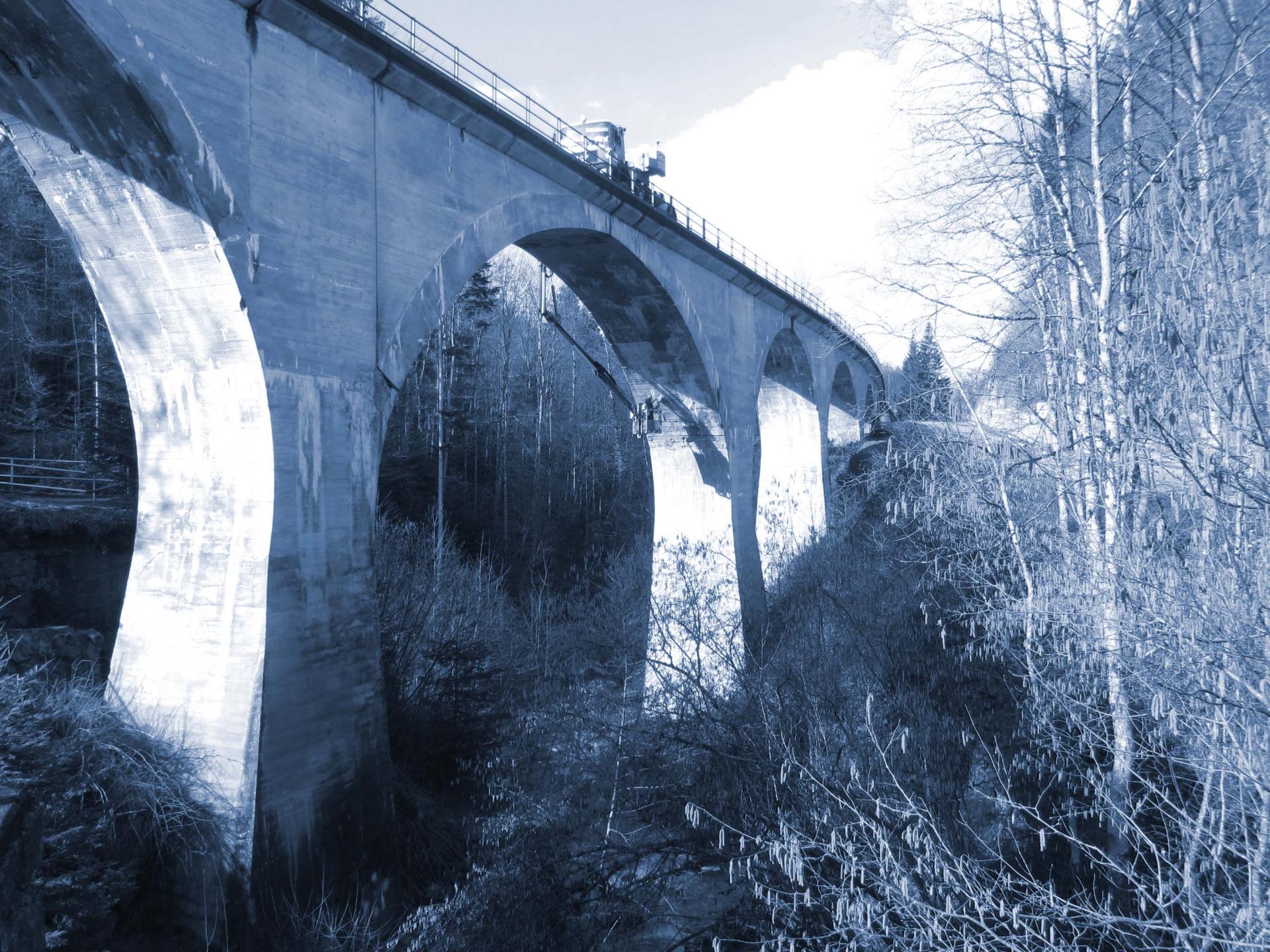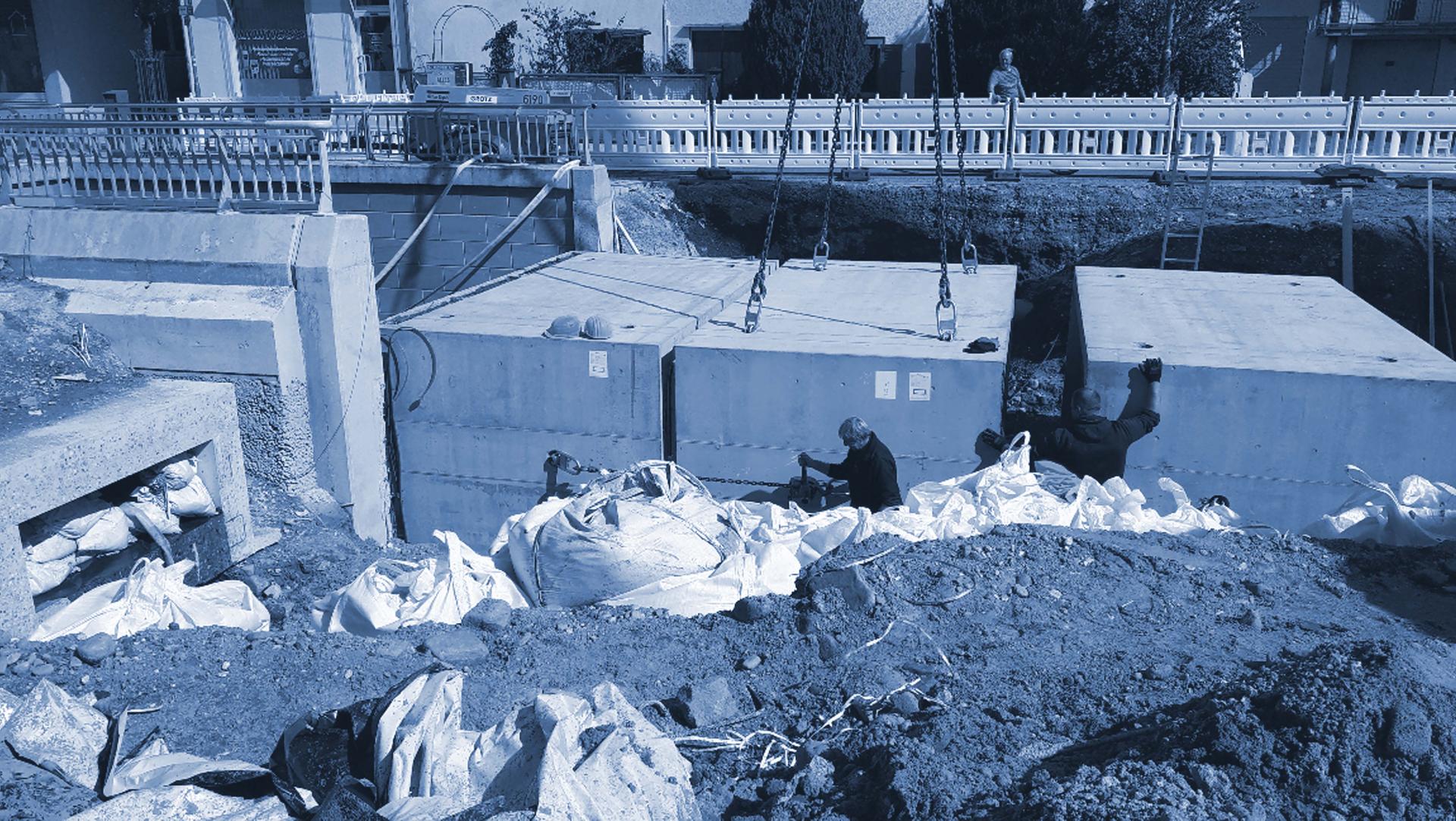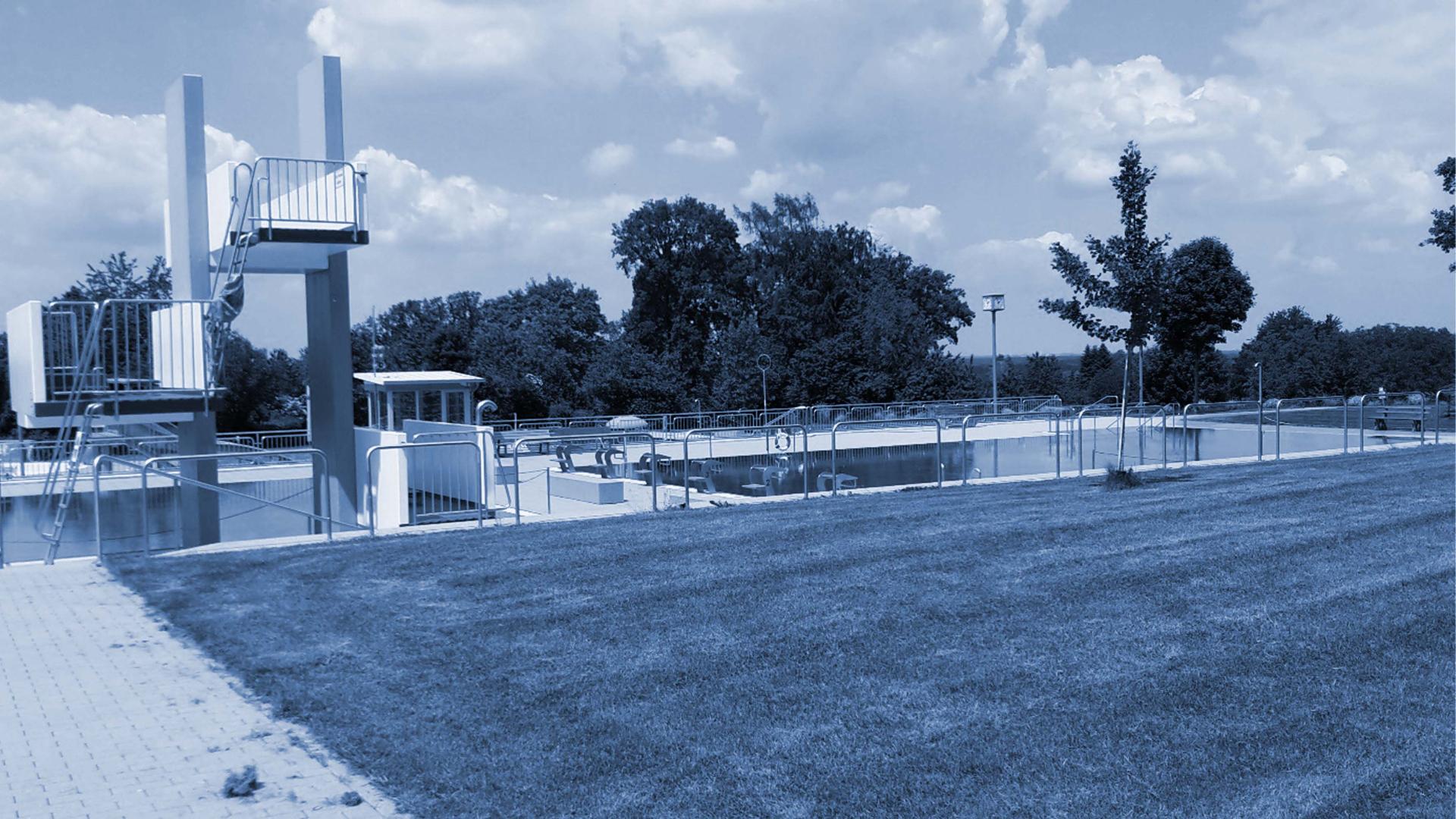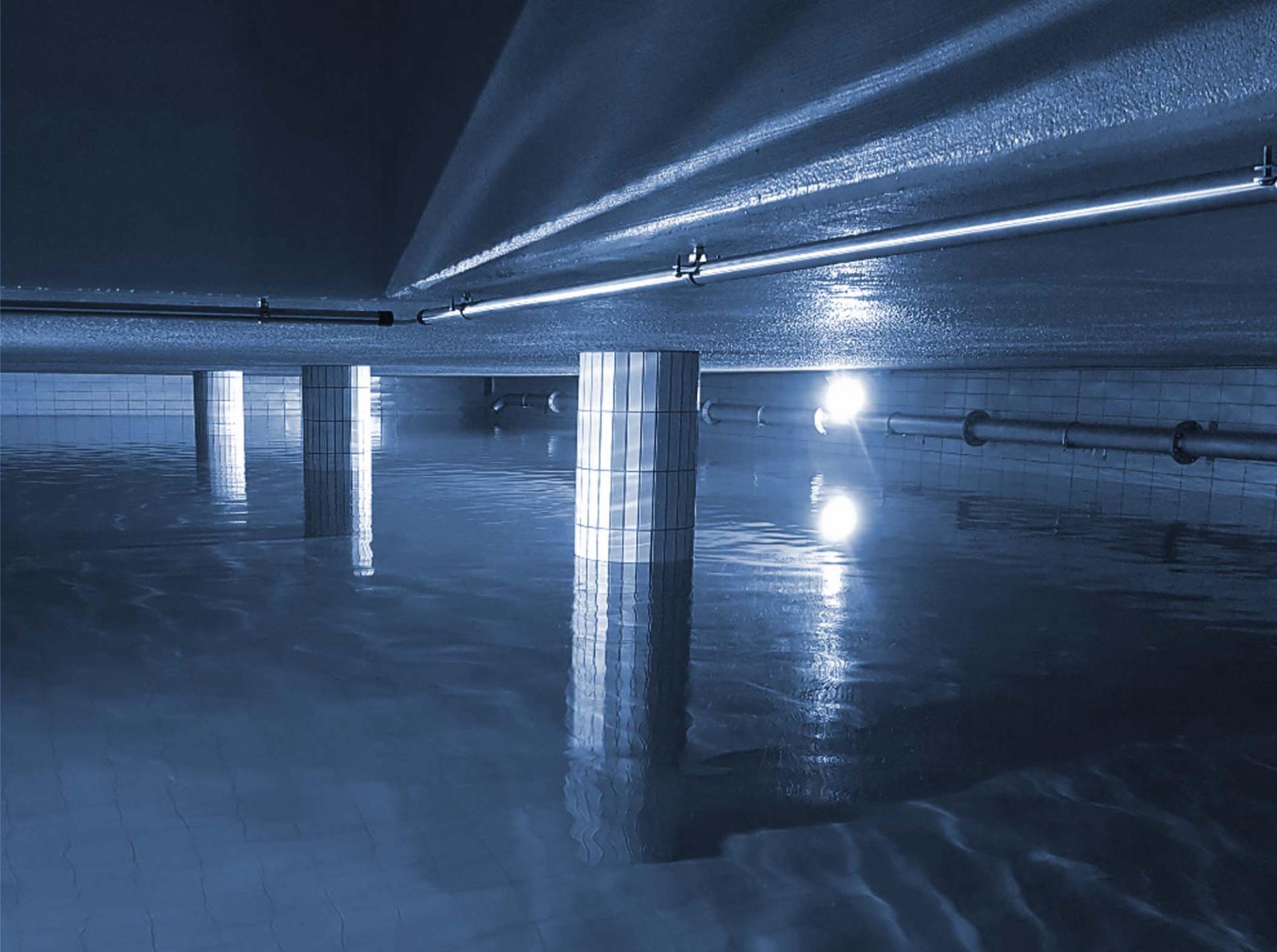KIT Innovation HUB
Basic information
Project Title
Full project title
Category
Project Description
In accelerating knowledge and technology transfer in the highly regulated construction sector dominated by SMEs, we are breaking new ground in knowledge and technology transfer.
We created a new innovation process, combining approaches from natural sciences, engineering and social sciences in which foresight processes, development and transfer, education and training, and communication are linked together in a novel way. This Innovation process has already been applied successful in practice.
Project Region
EU Programme or fund
Description of the project
Summary
The construction sector in Europe and worldwide is facing new challenges as a result of megatrends such as climate change, resource scarcity, digitalization and urbanization, which demand a wave of new innovations. However, the construction industry is conservative and not very forward-looking, highly regulated by standards and distrustful of innovation.
This situation calls for new approaches to break this global innovation deadlock. In order to achieve this, the KIT Innovation HUB was founded as a future-oriented and innovative institution that contributes new and important accents to the development of a sustainable infrastructure. For practical realization, we developed a novel innovation process consisting of four stages.
Firstly, we bring together all stakeholder of the construction value chain, i.e. from raw material producers to planners to local politicians and citizens, at a round table. In Foresight Innovation Communities, participants contribute with their specialized knowledge to develop a common picture of future challenges. From this point of view, the strategic, future-oriented selection of development topics of KIT HUB and its partners started.
After that, development projects are formulated with which expected or already existing needs for innovations can be tackled for the stakeholders. Transfer projects beginning from day one have a positive impact on the development process itself, but also inform market participants about new innovations in advance.
Education and training programs are important in order to give future users of newly developed innovations the knowledge at an early stage of how these technical solutions work and what problems they can solve.
Communication is preferably directed at the decision-makers in local politics and citizens. In this way, the information deficit in public administration and among citizens can be eliminated transparently and the introduction of innovations in the public sector accelerated.
Key objectives for sustainability
The sustainability goals cannot be achieved without significant contributions from the construction sector, as it is responsible for the largest anthropogenic mass and energy flows. However, infrastructure development is a key factor for the societal development of all countries, especially in emerging and developing countries, which are currently investing heavily in infrastructure development. Unfortunately, in the past industrialized nations have not implemented strategies and measures to build and maintain their infrastructure in a sustainable manner. Therefore, developing and emerging countries can also be expected to develop their infrastructure in a non-sustainable way, as they are building according to our blueprints.
The reasons for the low sustainability can be found in the insufficient durability of the structures, which leads to a dramatic shortening of their service life. In fact, the real service life of most of all infrastructure buildings is only from 20-30 years, compared to the planned service life of 100-120 years. In this case, technically complex rehabilitation measures are necessary, which ecological and economic impact is up to three times higher than the total impact during the initial erection. It follows that avoiding such repairs can significantly increase the sustainability of infrastructure.
Therefore, the KIT Innovation HUB – Prevention in Construction realizes the idea to extend the restoration-free service life of infrastructure through preventive actions: e.g., alternative building materials, technologies, construction methods or services. Their efficiency is impressive, as the financial and environmental impact of these measures is about 3-5% compared to the impact of a restoration measure. These prevention measures are developed in the KIT HUB in cooperation with all stakeholders involved in the life cycle of the infrastructure and jointly introduced into practice by applying the newly developed KIT HUB innovation process.
Key objectives for aesthetics and quality
Still integrated in the modern infrastructure are many structures from the beginnings of the 20th century and still fulfil their original purpose today. Included among them are spas from the Art Nouveau period, tap water reservoirs in the Wilhelminian style or bridge structures from the early days of railway construction. Today, however, many concrete buildings from the 1960s and 1970s are also listed monuments. Not only are they purpose-built structures that are an indispensable part of our technical history, but as cultural monuments they also represent important developments in European art history.
The preservation of these buildings as monuments is therefore particularly important, but it is even more important for us that they continue to fulfil their task as a "living" part of modern infrastructure. Our generation, as well as those to come, can thus not only understand the motivation and goals of master builders of the time, but also better understand our ancestors' attitude to life in terms of aesthetics and quality of experience.
To achieve these goals, we have developed various tools in recent years, in cooperation with the Bern University of the Arts, among others, which include technical as well as conservation and artistic aspects. The first step on this path was the development of project-related priority catalogues that equally consider functionality as well as the preservation of originality and aesthetics. Procedures of high-performance analysis, which are usually used for modern buildings in state analysis and monitoring, were also adapted for historic buildings. Based on the results, joint restoration conservation concepts were developed, which, in addition to the minimally invasive restoration of existing damage, also focused on the avoidance of further damage by means of preventive measures, which were primarily developed in the KIT Innovation HUB for application to historical buildings.
Key objectives for inclusion
Infrastructure constructions are characterised by their complexity and long lifespan. Many stakeholders are involved in their creation, either as part of the construction value chain or later in the life cycle of the building. Due to this typical structure of the industry, the stakeholders cooperate intensively within the individual construction and utilisation phases, but the interfaces between them are only very weakly developed. Consequently, communication between stakeholders across construction period and over time is significantly limited. In practice, decisions made at the beginning of the life cycle, e.g., materials selection, often cause serious consequences several decades later, e.g., for recycling. Megatrends, such as climate change or resource scarcity, already have a far greater impact on the construction sector than commonly expected. Therefore, the rapid development and introduction of innovations is indispensable; on the other hand, there is a conservative attitude of the industry, lots of regulations and the focus on daily business. All these factors delay, if not prevent, the European construction industry from adapting to tomorrow's challenges. Therefore, Foresight Innovation Communities (FinCom) were developed in the KIT HUB. To bring all actors of the value chain, i.e., producers of raw and building materials, planners, building contractors, as well as citizens and public building owners, to a round table. Participants are free to attend the events, so the only important thing is the contribution they make to the content. In practice, the influence of megatrends on individual infrastructure sectors is discussed. Finally, there is a common view of future developments and the resulting challenges and opportunities. This is particularly helpful for SMEs, as it reduces investment risks in the development of innovations. Building on this, the stakeholders develop innovative products, technologies, or services on their own or in cooperation with KIT.
Results in relation to category
Knowledge transfer and innovation development for the building sector and their rapid introduction play a key role in achieving the UN Sustainable Development Goals (SDGs). To do so, knowledge is developed in FinCom and innovations are developed in the Development and Transfer Communities (DeCom). To transfer both results, additional tools were developed that address both actors from the building sector and public builders as infrastructure operators.
Knowledge in administrations is currently strongly focussed on public tendering and contracting regulations; expertise on the current state of art or even on the need for innovations is rarely available. The public sector thus loses its role as a responsible customer vis-à-vis suppliers from the construction industry. Hence, an offer for training and further education was developed directly for the public administration. In addition to classical face-to-face events, multimedia formats are set up. Further training offers adressing all actors in the construction sector in order to generate a homogeneous knowledge level within the value chain regarding the development of sustainable infrastructure. This includes the discussion of ecological and economic impacts of poor durability or the social consequences of a lack of municipal infrastructure. In Germany, e.g., only about 50% of pupils learn to swim because public swimming pools are closed due to high maintenance costs.
The political decision-makers are another focus of the programme. So far, their decisions mainly focused on costs, but through seminars and workshops, the high importance of functionality and durability of buildings, i.e. their quality, as a prerequisite for sustainable infrastructure will be addressed. Using community-owned structures as practical examples, the advantages of such a trade will be made visible. Complementing technical aspects will be economic, ecological and socio-scientific considerations.
How Citizens benefit
From the beginning, we worked closely with the municipality of Malsch (Baden-Württemberg), so that the prevention strategies developed in the KIT HUB were promptly implemented on real structures, both new and existing. Projects included the renovation of Hans-Thoma-School, extension of the flood protection system, repair of a tap water reservoir or development of a new housing area.
The KIT HUB representatives support both mayor and municipal council in making decisions on municipality projects. For this purpose, technical contents are analysed with regard to sustainability and balanced against costs. Object-dependent user groups, such as the teaching staff in the case of the school renovation, are involved, and alternative proposals developed and evaluated together with the administration. After the political decision-making process, such as selection of planning offices and construction companies, the administration is supported until the project is finished. This includes prior investigations on the object, adjustments to the planning in process and quality assurance at its end.
With these real projects, participants were directly taught new knowledge about sustainable infrastructure development through a kind of trainee on job. Meanwhile, this approach has become firmly established in the administration of the municipality. With this prevention strategy, existing structures are protected in such a way that they can be used in the long term without repairs. On one hand, this is associated with considerable savings in life cycle costs; on the other, the environmental balance of these structures also improves considerably. The attitude of the political municipal leadership and administration has also changed in a sustainable way, so there is also a high demand from other municipalities in Baden-Württemberg.
Companies from the construction industry are now also using our approaches to improve their competitiveness in the price-dominated construction sector
Innovative character
The recipe for success of the KIT Innovation HUB is, on one hand, the linking of basic research, applied research and knowledge and technology transfer in a concept that we call the nano-macro approach. Basic research is carried out by a working group within the framework of the seven-year research programmes of the Helmholtz Association. Results promising for applied research will be initiated in corresponding 2 to 3 year projects by another working group, in parallel to the basic research. Should the results indicate a successful knowledge and technology transfer, the responsible working group in the KIT HUB takes over and transfers the findings into products, technologies and services in cooperation with industry or municipal partners.
The close cooperation of the three highly specialised working groups allows the parallelisation of individual R&D steps, accelerating knowledge generation considerably and enabling high-quality knowledge and technology transfer. Strong patents can thus be generated without losing proximity to practice.
Conversely, experiences from practical application and from FinCom provide additional impulses for basic and applied research. Basic and applied research is problem- and solution-oriented in this nano-to-macro approach, not just problem-oriented. The formation of interdisciplinary working groups consisting of engineers, natural scientists, humanities scholars, social scientists and designers who provide input for innovations that go beyond the boundaries of the field is decisive.
These high-quality results from basic research, applied research and knowledge and technology transfer can flow directly into the training and further education of construction experts and into communication with decision-makers through the components of the KIT HUB. This ensures that when these innovations are introduced, the knowledge required for their application is also available to all actors in the construction value chain.

